Deri Protocol Crypto Exchange Review: A Deep Look at DeFi Derivatives Trading
Deri Protocol Leverage Calculator
Position Details
Price Movement
Results
Position Value
$0.00
Margin Required
$0.00
Liquidation Price
$0.00
Potential Profit
$0.00
Potential Loss
$0.00
Risk Warning
Leverage amplifies both profits and losses. Using high leverage (5x+) can lead to rapid liquidation if the market moves against your position. Deri Protocol positions are tokenized as NFTs, and liquidation occurs when collateral value falls below the maintenance margin requirement.
Deri Protocol isn't your typical crypto exchange. You won't find spot trading, margin accounts, or a sleek mobile app. Instead, it’s a behind-the-scenes DeFi engine built for one thing: trading perpetual contracts on-chain - without a middleman. If you’ve ever wanted to bet on Bitcoin’s price moving up or down without holding the asset, or hedge your crypto portfolio against sudden drops, Deri Protocol gives you a way to do it directly from your wallet. But is it worth your time in 2025? Let’s cut through the noise.
What Exactly Is Deri Protocol?
Deri Protocol is a decentralized exchange built for derivatives - specifically, perpetual contracts. Unlike centralized exchanges like Binance or Coinbase, Deri doesn’t match buyers and sellers. Instead, it uses liquidity pools as counterparties. When you open a long position on ETH/USD, you’re not trading with another person. You’re trading against a pool of funds locked in smart contracts. This eliminates order book slippage and makes trading possible even with low liquidity.
The real innovation? Risk exposures are tokenized as NFTs. That means your position isn’t just a number in a database - it’s a unique digital asset you can transfer, lend, or even use as collateral in other DeFi protocols. Think of it like owning a piece of a bet, not just a position. This opens up new financial possibilities, like borrowing against your derivative position or integrating it into yield strategies.
Deri runs on two blockchains: BNB Chain and Arbitrum. That’s intentional. BNB Chain gives you faster, cheaper trades. Arbitrum offers Ethereum-level security with lower fees. You pick based on your needs - speed or safety. The protocol is open-source, meaning anyone can audit the code on GitHub. No hidden tricks. No centralized control. But that also means you’re on your own if something goes wrong.
How Does Deri Protocol Work?
Here’s the step-by-step breakdown:
- Connect your Web3 wallet (MetaMask, Trust Wallet, etc.) to the Deri interface.
- Choose your chain - BNB Chain or Arbitrum.
- Deposit collateral (like BUSD, USDC, or DERI token) into the liquidity pool.
- Select a trading pair - BTC/USD, ETH/USD, or other DeFi tokens.
- Set your leverage (up to 10x), then open your long or short position.
- Monitor your position. Close it anytime to realize profit or loss.
Every trade you make is backed by the liquidity pool. The pool earns fees from your trades, and those fees are distributed to liquidity providers. That’s how the system stays self-sustaining. If you’re not trading, you can add funds to the pool and earn yield. It’s a classic DeFi incentive loop: users provide liquidity to earn, and traders get access to capital.
Price feeds come from Chainlink oracles, ensuring accurate, tamper-proof pricing. This is critical. If the price feed is wrong, you could lose money even if the market moves correctly. Deri’s reliance on Chainlink adds a layer of trust - something many DeFi projects still struggle with.
DERI Token: Utility and Value
The DERI token is the heartbeat of the ecosystem. It’s used for:
- Paying trading fees (with discounts for holders)
- Staking to earn protocol revenue shares
- Governance voting (though voting power is limited)
- Collateral in some liquidity pools
As of October 2025, DERI trades around $0.0045 USD. That’s a micro-cap token. Its 24-hour volume hovers near $18,000 - tiny compared to top DeFi derivatives platforms like GMX or dYdX, which move hundreds of millions daily. The token’s market cap is under $5 million, making it extremely volatile. A single large trade can swing the price 20% in minutes.
Don’t expect DERI to be a store of value. It’s a utility token. Its worth is tied directly to how much trading happens on Deri Protocol. Low volume = low demand = low price. That’s the catch. Deri’s innovation is real, but without users trading, the token has no real economic engine.
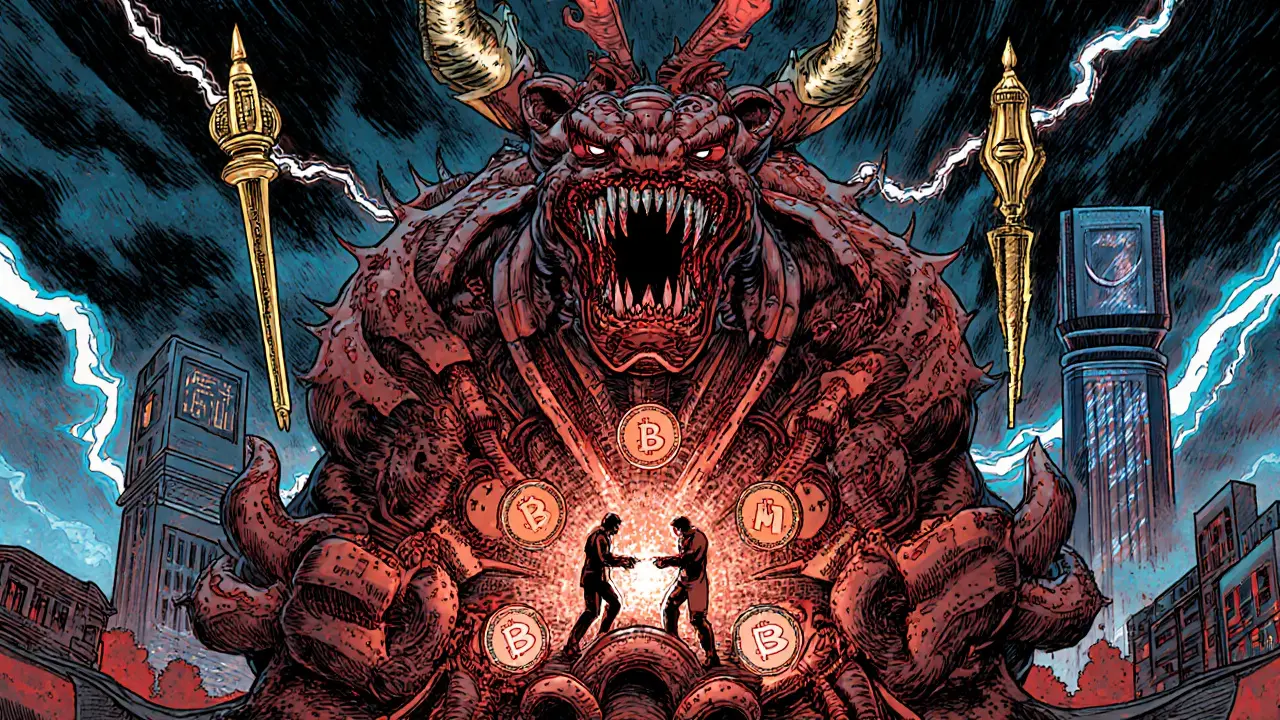
Pros and Cons of Deri Protocol
Pros
- Non-custodial - You control your funds. No KYC. No withdrawal delays.
- Capital efficient - You can open large positions with minimal collateral thanks to smart contract design.
- NFT positions - Your trades become transferable assets. This unlocks DeFi composability.
- Multi-chain - Trade on BNB Chain for low fees or Arbitrum for Ethereum security.
- Open-source - Code is public. Audited by third parties. No surprises.
Cons
- Extremely low liquidity - Order books are shallow. Slippage can be high on larger trades.
- Low trading volume - $18K/day vs. dYdX’s $100M+ means fewer traders, less price stability.
- Anonymous team - No known founders. No roadmap. No public updates. This scares off institutional investors.
- High learning curve - You need to understand perpetual contracts, leverage, and DeFi risk. Not for beginners.
- Wallet complexity - You need to manage multiple chains, switch networks, and pay gas fees in native tokens (BNB or ETH).
Who Is Deri Protocol For?
Deri Protocol isn’t for everyone. If you’re a casual crypto holder who buys BTC and HODLs, skip it. This is a tool for experienced DeFi traders who:
- Want to hedge their portfolio against market crashes without selling their assets
- Are comfortable with leverage and understand how liquidations work
- Want to experiment with NFT-based financial instruments
- Enjoy building complex DeFi strategies (e.g., using your derivative position as collateral in Aave)
It’s also for developers. Because Deri is open-source and composable, builders can integrate its risk exposure NFTs into new DeFi apps. Imagine a yield optimizer that automatically opens short positions on volatile tokens to hedge your portfolio. That’s possible with Deri.
But if you’re looking for a reliable, high-volume exchange to trade derivatives - stick with dYdX, GMX, or even centralized options like Bybit. Deri Protocol is more of a prototype than a product. It’s a proof of concept that works, but it’s not yet scaled.
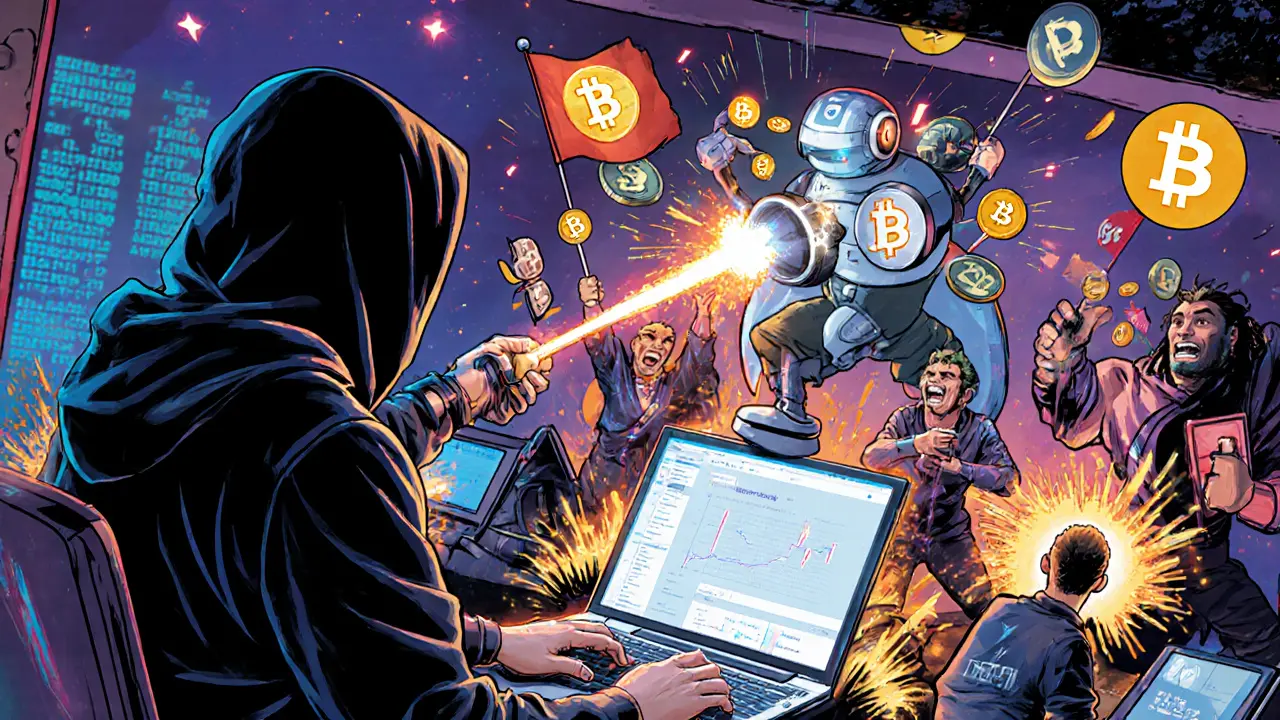
Where Can You Trade DERI?
You can’t trade Deri Protocol’s perpetual contracts on centralized exchanges. You need to go directly to the protocol’s interface at deri.io. But you can buy the DERI token on:
- Gate.io (centralized)
- LATOKEN (centralized)
- Uniswap (on Arbitrum)
- PancakeSwap (on BNB Chain)
- SushiSwap (on multiple chains)
The largest trading pair is DERI/BUSD, accounting for over 50% of volume. That tells you something: most traders use stablecoins to enter and exit. There’s little demand for DERI/ETH or DERI/BTC pairs.
Is Deri Protocol Safe?
Technically, yes - if you understand the risks. The smart contracts have been audited. The code is public. The oracle feeds are reliable. But safety in DeFi isn’t just about code. It’s about liquidity, incentives, and long-term viability.
Here’s the real risk: Deri Protocol could fade away. With an anonymous team, no roadmap, and minimal funding, there’s no guarantee of future development. If no one adds liquidity, the pools dry up. If no one trades, the fees vanish. The token becomes worthless. That’s the gamble.
Compare that to dYdX, which has a known team, venture backing, and a clear path to growth. Deri has innovation. But it lacks sustainability.
Final Verdict: Is Deri Protocol Worth It?
Deri Protocol is a fascinating experiment. It solves real problems in DeFi derivatives trading. Tokenizing risk as NFTs is brilliant. Multi-chain support is smart. Capital efficiency is top-notch.
But it’s stuck in a chicken-and-egg problem: no liquidity because no one trades, and no one trades because there’s no liquidity. The volume is too low to attract serious traders. The token is too volatile to be useful as collateral. The team is too anonymous to inspire trust.
If you’re a DeFi power user who wants to tinker, experiment, or build on top of it - go ahead. Set up a small position. Add a little liquidity. See how it works. It’s a sandbox for the brave.
But if you’re looking for a reliable, high-volume derivatives exchange to trade with confidence - keep looking. Deri Protocol isn’t there yet. It’s a promising idea waiting for the right spark. Right now, that spark is missing.
Is Deri Protocol a centralized or decentralized exchange?
Deri Protocol is a fully decentralized exchange. It’s non-custodial, meaning you keep control of your funds in your own wallet. There’s no KYC, no account creation, and no central authority that can freeze your assets. All trades happen via smart contracts on BNB Chain or Arbitrum.
Can I trade Deri Protocol on Binance or Coinbase?
No, you cannot trade Deri Protocol’s perpetual contracts on Binance, Coinbase, or any centralized exchange. You can only trade those directly on the Deri Protocol platform via Web3 wallets. However, you can buy the DERI token itself on centralized exchanges like Gate.io and LATOKEN.
What’s the difference between Deri Protocol and dYdX?
dYdX is a much larger DeFi derivatives platform with millions in daily volume, a known team, and institutional backing. Deri Protocol is smaller, less liquid, and has an anonymous team. The key difference is Deri tokenizes positions as NFTs, while dYdX uses standard ERC-20 tokens. Deri is more composable with other DeFi apps, but dYdX offers better liquidity and user experience.
How do I get started with Deri Protocol?
First, install a Web3 wallet like MetaMask. Then, switch your network to either BNB Chain or Arbitrum. Fund your wallet with USDC, BUSD, or BNB/ETH for gas. Go to deri.io, connect your wallet, deposit collateral, and choose a trading pair. Start with a small position and low leverage to learn the system.
Is Deri Protocol a good investment?
DERI is not a good investment for most people. It’s a micro-cap token with extremely low trading volume and no clear path to growth. Its value depends entirely on increased usage of the protocol - which hasn’t happened yet. Only experienced DeFi traders should consider holding DERI, and even then, only as a speculative bet, not a long-term asset.
What are the risks of using Deri Protocol?
Risks include smart contract bugs (though audited), impermanent loss if providing liquidity, extreme price volatility of DERI, lack of customer support, and the possibility the project is abandoned due to its anonymous team. Also, if you use leverage, you can be liquidated if the market moves against you. Always test with small amounts first.



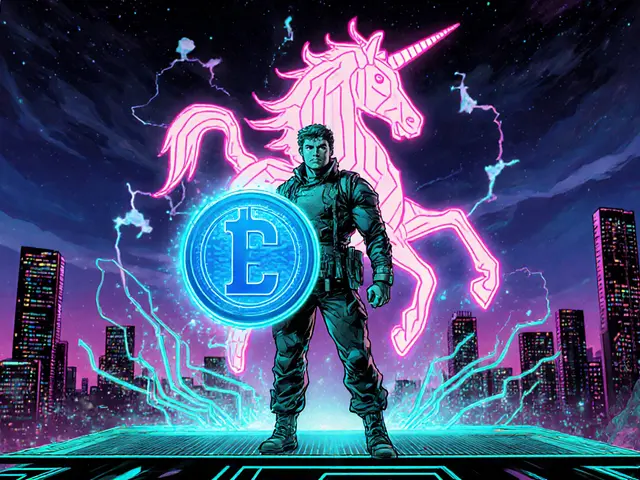
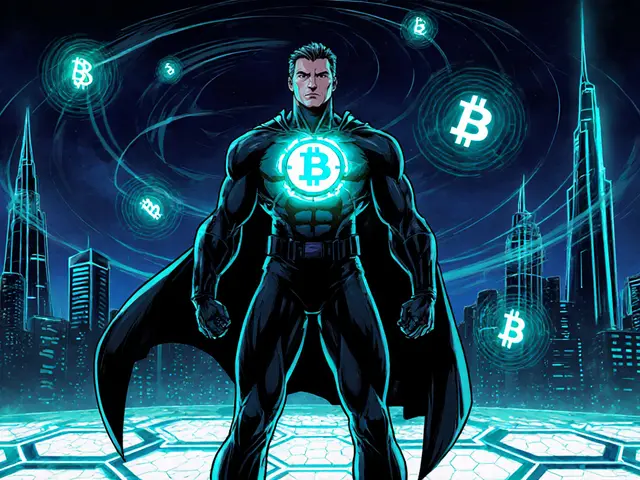
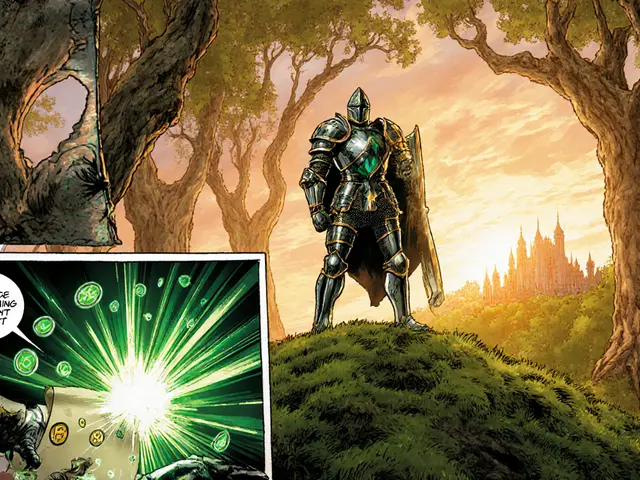

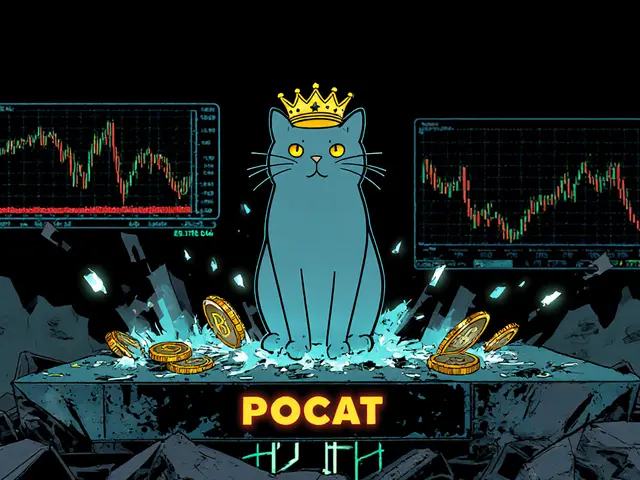
Wow, another American crypto bro pretending DeFi is the future while ignoring that real finance has risk management and regulators. Deri’s NFT positions? Cute. But when the smart contract gets hacked and your ‘asset’ vanishes, who’s gonna refund you? No one. That’s why the West keeps losing in crypto.
Bro this is actually wild how Deri lets you turn a trade into an NFT 🤯 I used to think DeFi was just a mess of gas fees but this? This is like owning a piece of a bet you can sell on OpenSea. I just added 0.5 ETH to the Arbitrum pool and already got 0.03 DERI in fees. Slow but real 🚀
I tried this once. Got liquidated in 3 minutes. Lost $200. Now I just use Bybit. At least they have customer service and not some anonymous devs who ghosted their Discord.
u forgot to mention the gas fee trap! On BNB Chain its fine but on Arbitrum u need like 0.005 ETH per trade. If u trade 5x a day u burn $15 just in fees. Thats why volume is low lol. Fix the fee structure first.
The NFT thing is genius. Why hasn’t anyone else done this?
They say it’s decentralized… but who really controls the Chainlink oracles? Who funds the devs? Who owns the domain? The DERI token is worth nothing because the whole thing is a front for a VC wash trade. They’re building a honeypot for retail. I’ve seen this movie before. It ends with a rug pull and a ‘we’re working on it’ tweet.
I love how people act like Deri is some revolutionary tech when it's just a glorified options bot with extra steps. And the team? Anonymous? Yeah right. Probably some guys in a basement in Singapore with a whitepaper written in 2021. I'd rather trust a centralized exchange with KYC than this ghost project.
The structural inefficiencies of Deri Protocol are non-trivial. While the theoretical framework of tokenized risk exposure is academically compelling, the practical implementation suffers from insufficient liquidity depth, suboptimal capital allocation, and an absence of institutional-grade governance mechanisms. One cannot reasonably expect market adoption without demonstrable scalability.
NFT positions??!! 😱 I just used my Deri position as collateral on Aave and earned 12% APY on my short 🤯 DeFi is alive!! 🚀🔥 #DeriRevolution
You people treat this like it’s some kind of freedom tech. Meanwhile, the whole system runs on American blockchains and American oracles. Deri doesn’t break the system-it just makes it more complicated for people who don’t know how to read a whitepaper. Real sovereignty means not trusting any chain. Not even Ethereum.
I’ve been watching Deri for a year. It’s not going to be the next Binance. But it’s the kind of quiet innovation that changes DeFi slowly. I added $50 in liquidity. Got $0.80 in fees last month. It’s not a get-rich-quick scheme. It’s a slow burn. And honestly? That’s more honest than most projects.
The real genius here is composability-your position as an NFT can be used in yield aggregators, insurance protocols, even prediction markets. Imagine a DAO that auto-hedges your portfolio using Deri NFTs based on macro signals. That’s not sci-fi-it’s already being built. Deri isn’t the product. It’s the Lego block. And the builders? They’re global. From India to Brazil to Berlin. This is the future of finance-permissionless, modular, and beautiful.